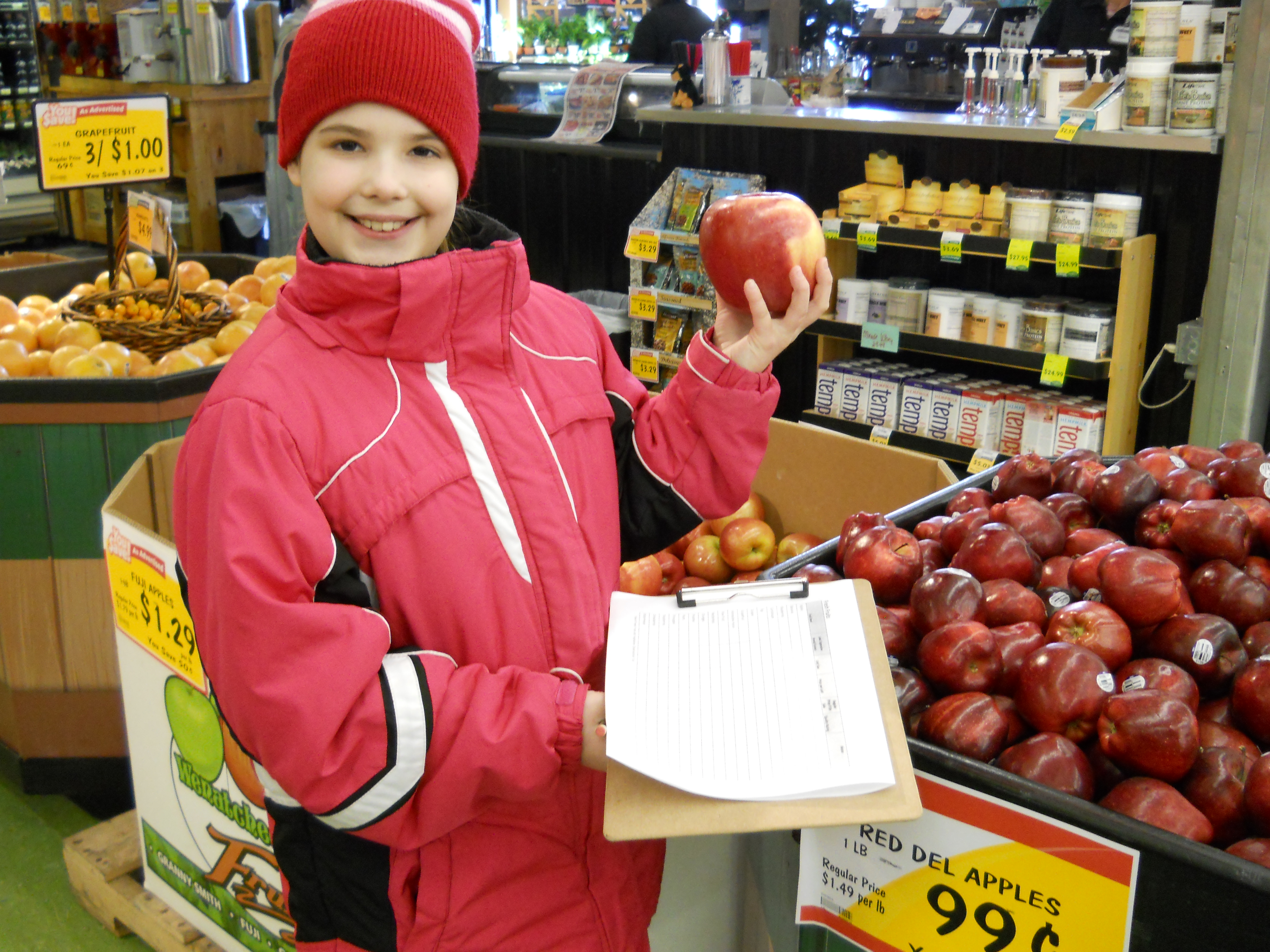 |
| Oregon student observing availability and pricing of fruits and veggies in a local grocery store |
Today, students spend more hours in school and afterschool settings than they do at home. Thus, in many cases, children are eating more meals at school. School, afterschool, camp, and non-traditional educational settings are outstanding environments to help children learn healthy behaviors and increase consumption of fruits and vegetables right alongside their daily lessons in math and language arts.
The following steps can be incorporated into educational settings to improve students’ consumption of fruits and vegetables. In the long-term, these steps can positively impact the overall health of children and society.
-
Be a positive role model, because children learn habits by watching you. Educators, administrators, staff, volunteers, and parent organizations should be role models. At meetings, social events, and activities, fruits and vegetables should be front and center. As role models and leaders, the younger generation looks to us for guidance and we need to be modeling healthy behaviors.
-
Make rewards educational and non-food related. Rather than having a food-related reward, replace it with and an educational activity such as “you choose the game” or extra recess time. If the reward does involve food, make the food a healthy option such as fruit kabobs.
-
Incorporate healthy snacks into parties. Recently at a local school in a rural area, students were challenged by the local Extension Agent, teachers, and administration to switch Valentine’s Day cards from candy to only healthy choices. Children brought in small oranges with name tags that said, “You are a cutie” and bouncy balls that said, “You make my heart bounce.”
-
Allow children to conduct research about the fruits and vegetables being served. Students can make posters including the nutrient value of each item and turn their research into a marketing campaign poster or ad to encourage other kids to eat the fruit or vegetable. This type of project can be incorporated into classes such as language arts, health/wellness, art, and home economics. Make sure the student work is displayed in the area where they eat!
-
Begin a school-wide challenge to increase the amount of fruits and vegetables consumed. Weighing and measuring fruits and veggies consumed is a practical application for math principles that will connect classroom instruction to practical application, while increasing consumption of healthy foods.
-
Create a wellness committee that includes youth as the leaders with support from adults. A wellness committee, led by youth, can be an empowering change for the health environment and lunchroom.
Contributors
Barbara Brody, Oregon State University Extension
Maureen Hosty, Oregon State University Extension
Sources
United States Deprtmant of Agriculture Food and Nutriton Healthier School Day
Van der Horst, K., Oenema, A., Ferreira, I., Wendel-Vos, W., Giskes, K., van Lenthe, F., & Brug, J. (2007). A systematic review of environmental correlates of obesity-related dietary behaviors in youth. Health Education Research, 22, 203-226.
